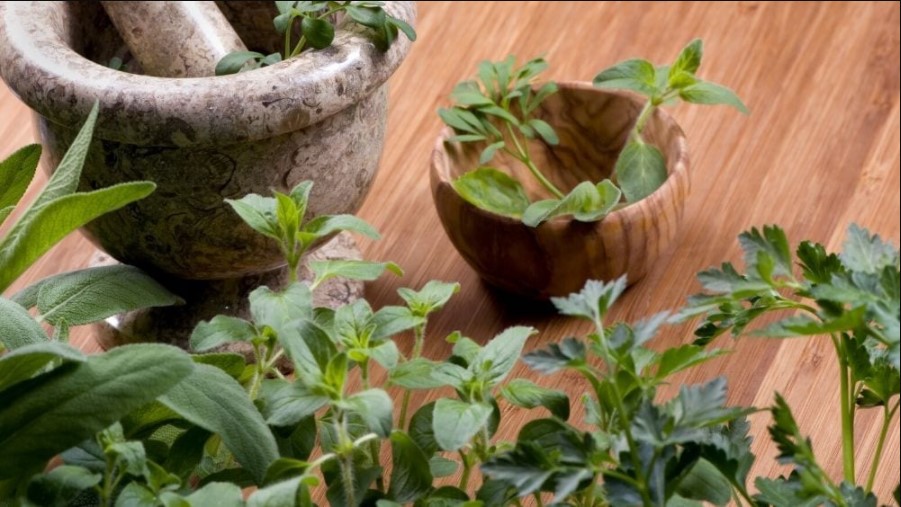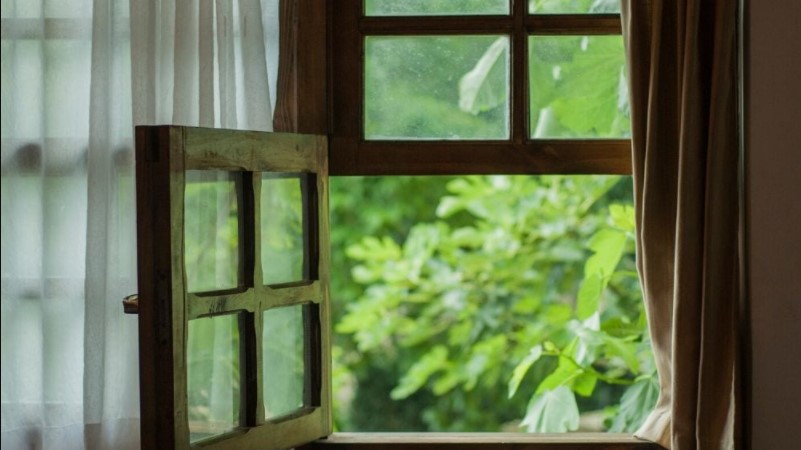If the idea of using fresh-cut herbs in your favorite recipes appeals to you, but you don't have the space in the garden to plant a herb garden, don't despair. A herb garden is the best option. In fact, without the heat and pests to deal with, a kitchen herb garden might be a better option, especially for beginners. As with all gardening, planning before planting is key. Here's a step-by-step guide to get your herbs off to a healthy start.
Let the light be made
Herbs thrive in sunny spaces; most varieties will need at least six hours of sunlight a day. East- and west-facing window sills are ideal homes for your herb containers, according to The Growers Exchange, an online source of gardening herbs, supplies and resources.. If a window sill doesn't work, try moving a plant stand or table near a window. Just make sure the delicate leaves of your plants don't touch cold windows. If your kitchen lacks strong natural lighting, invest in fluorescent grow bulbs, especially during the darker winter months. But, while herbs need sun and light to grow, they also like to rest. Most prefer a total of 10-12 hours of light (solar and artificial) a day.
Grow What You Eat
Before heading to the plant nursery for seeds or seedlings, first think about what you will actually eat. Herb plants grow best when trimmed regularly. Take an inventory of the recipes or types of common foods that your family likes. Do you need a weekly dose of Mexican food? If so, you'll want a pot or two of coriander. Is Italian food your comfort food? Consider adding oregano, basil, parsley, or chives to the garlic. Do you like flavored teas and waters? Be sure to add varieties of mint to your shopping list.
Since you likely have limited space for your indoor garden, be strategic about your plant options. Do you need inspiration? Browse this list of some popular and easy indoor herb garden options.
Choose the Right Pots
Once you've focused on the herbs you'll be planting, determine how many pots you can plant in your kitchen space. Invest in 8-inch or larger pots (use larger pots to combine complementary herbs). When it comes to the type of pot, there are many options. Austin-based The Natural Gardener says: “Plastic is lightweight and inexpensive, but it can look cheap and deteriorate. Terracotta is inexpensive and readily available, but may discolor. Glazed pottery is beautiful and durable, but more expensive and heavy ”.
Whichever type you choose, make sure your pots have drainage holes and deep trays to catch any overflows.
Plant your herbs
Annual plants like basil, cumin, and sesame usually grow well from seed. Perennials like lemongrass and mint tend to take longer to germinate. Check with your local nursery or online herb garden provider for advice on which herbs will grow best in your region and in what season. The National Gardening Association is a storehouse for information on the types of herbs and when and how to plant for best results.
Be picky about the flooring you choose. Opt for a good quality potting soil or a 50/50 combination of a commercial seed mix and potting soil. Follow the directions on the seed package to determine the depth to plant your seeds. If you are transplanting plants, dig a hole deep enough to cover just the root ball. Cover and water well. Add some mulch, stone, soft glass pieces, or other mulch to give your containers a good look and help retain moisture in the soil.
Nutrients and Water
Herbs are great for beginning gardeners because they require little maintenance. Feed them every one to two weeks with an all-purpose organic fertilizer. Water as needed, but always empty the water tray. Can't remember when you last watered or fertilized it? Try an app like WaterBug or an old-fashioned (but fun) printed watering calendar.
Enjoy the Fruits of Your Effort
Now that your plants are happily thriving in your kitchen containers, be sure to harvest them regularly. Choose from the first few inches when the plant is dry and before it begins to flower. Tip: Constant dropping (removing flowers as they bloom) helps the plant continue to produce new leaves for harvest. Use fresh or dried herbs, or freeze your herbs for future use.


Comments
Post a Comment